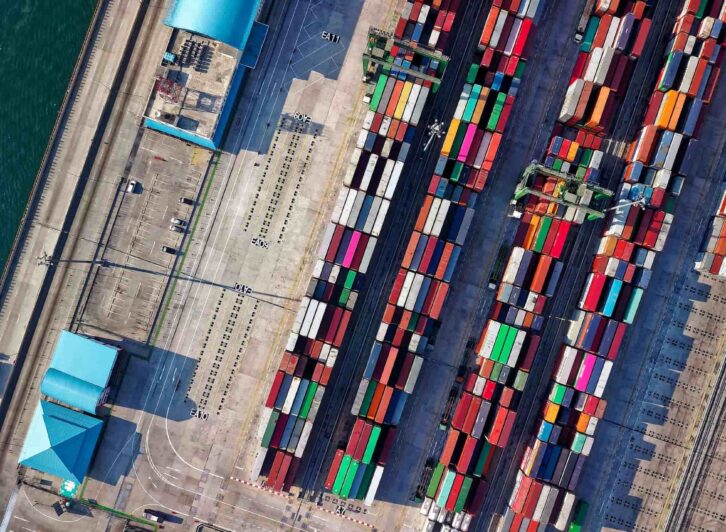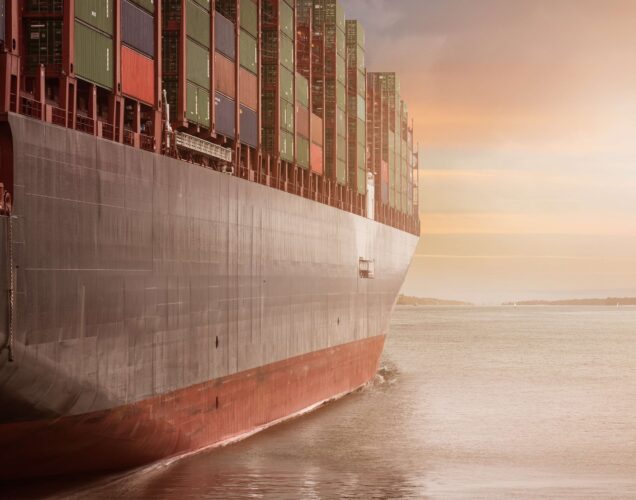When looking for a logistics provider, there’s a good chance you’ll come across the terms 3PL, 4PL and 5PL. Short for third-party logistics, fourth-party logistics and fifth-party logistics respectively, they are essentially used to describe the breadth of services offered by an external logistics provider.
But what is the difference between 3PL, 4PL and 5PL? And how do you know which is the right solution for your supply chain?
A brief overview of 1PL and 2PL
While 3PL, 4PL and (more recently) 5PL are probably the most recognised terms, it’s also worth having an understanding of 1PL and 2PL.
1PL (First-Party Logistics)
Any company that transports products directly from one location to another – or which needs cargo to be delivered between two locations – can be classed as a 1PL (first-party logistics) provider.
For example, a timber merchant that delivers timber directly to customers, using its own vehicles, would be classed as a 1PL. The same would also apply to the cargo receiver.
2PL (Second-Party Logistics)
A 2PL, or second-party logistics provider, is a company that owns assets such as container ships, aircraft or HGVS, and uses them to transport goods for other companies (i.e. their clients). Shipping lines, airlines and haulage companies would fall into this category, likewise companies that operate warehouse and storage facilities.
In the above example, the timber merchant may employ the services of a 2PL to transport its goods overseas, or if it didn’t have enough trucks to service all of its domestic customers.
3PL (Third-Party Logistics)
What is 3PL?
As the term suggests, 3PL refers to the outsourcing of logistics to a third party. A 3PL, or third-party logistics provider, manages all (or part) of a company’s logistics operations, effectively acting as an intermediary between 1PLs and 2PLs.
3PLs have grown in prevalence since the 1990s as many SMEs have recognised the cost efficiency of outsourcing their warehouse, transport and fulfilment services to external parties.
[cta url=”https://hemisphere-freight.com/contact/” text=”Looking for a reliable 3PL provider?” image=”https://www.hemisphere-freight.com/wp-content/uploads/2019/05/aerial-shot-shipping-containers.jpg”]
What services does a 3PL provide?
A 3PL can assist companies at any stage of their supply chain, typically offering an integrated logistics solution that covers a range of services, including but not limited to:
- Warehousing
- Freight forwarding
- Customs procedures
- Inventory management
- Road haulage
- Ocean freight
- Air freight services
- Cross-docking
- Export packing
- Returns management
In essence, a 3PL acts as a company’s logistics department, saving it the time, hassle and expense that comes with managing the whole process in-house. Alternatively, a company may turn to a 3PL following a merger or acquisition, when its supply chain becomes too complex to manage internally.
3PLs can be asset-based, non asset-based or a combination of the two. Where a 3PL doesn’t own any assets such as vehicles or bonded warehouses, it will use its established partnerships with hauliers, airlines and carriers to secure the space that clients need for their cargo, at the most competitive rates possible. As such, the role of a transport broker often overlaps with that of a 3PL.
Advantages of using a 3PL
As alluded to above, outsourcing your logistics to a 3PL can have significant cost benefits compared to managing everything in-house.
While this may be feasible for a large conglomerate or market leader, most smaller firms won’t be able to afford the overheads attached to running a warehouse, operating their own fleet of vehicles and paying a team of employees to manage their logistics.
By establishing long-term relationships with carriers, 3PLs are often able to secure lower prices with carriers, which are then passed on to customers. These relationships can also make it easier to secure container space during peak shipping seasons.
Leaving logistics in the hands of a third party can also free up time and resource to focus on business-critical activities such as manufacturing, sales and product development.
4PL (Fourth-Party Logistics)
What is 4PL?
4PL (fourth-party logistics) is a more advanced form of supply chain management, focusing on the optimisation of the whole logistics function, rather than the delivery of individual parts.
While some 4PLs perform similar functions to 3PLs, they are usually non-asset based, meaning they don’t own any vehicles or storage facilities themselves. Their overall brief is typically more strategic and consultative; they offer advice and solutions on how a company’s supply chain can be enhanced to deliver better results.
A 4PL may coordinate the activities of 3PLs that handle specific parts of the supply chain. There is no set structure for a 4PL, and some larger 3PLs may even offer 4PL solutions as part of their service to clients.
Advantages of using a 4PL
Using a 4PL can be an attractive option for companies whose supply chain is complex and geographically far-reaching. With a ‘bigger picture’ view of a supply chain and the technology that can enhance it, a 4PL may be well placed to improve supply chain efficiency.
Because they don’t tend to own any vehicles or warehouse facilities, 4PLs sometimes offer a greater degree of flexibility than a company that has its own assets. Instead of trying to use their own assets wherever possible, they’ll try to find the most suitable supplier for the client’s needs.
Using a 4PL will also give you the peace of mind of knowing that your entire supply chain is in the hands of one provider, saving you having to deal with multiple partners. Put simply, a 4PL will be the single point of contact for your supply chain.
5PL (Fifth-Party Logistics)
What is 5PL?
5PL (fifth-party logistics) has emerged more recently than 3PL and 4PL, with the concept open to various interpretations. Generally, however, a 5PL provider looks beyond individual supply chains, focusing instead on wider supply networks.
A 5PL will plan, organise and implement a client’s logistics solutions, taking all elements of supply chain management out of their hands. Their focus on supply networks means they’ll oversee every single supply chain within an organization.
With most 5PLs specialising in big data and leveraging technology to drive efficiency, they tend to be more valuable to e-commerce businesses than companies with a bricks-and-mortar presence. Other technologies that 5PLs may look to harness include robotics, blockchain, artificial intelligence (AI) and Bluetooth beacons.
Advantages of using a 5PL
5PLs are a very new addition to the logistics space, but their ability to manage multiple supply chains makes them an attractive proposition for established or fast-growing online retailers, for whom an efficient supply network is essential.
With the emergence of new technologies that have the potential to transform supply chains, it could make strategic and commercial sense to partner with a 5PL, especially if your company sells primarily through digital channels.
3PL, 4PL, 5PL – which is the best solution for your company?
The decision of whether to use a 3PL, 4PL or 5PL will ultimately depend on the needs of your business, and whether you have the capacity to manage your logistics in-house.
At Hemisphere Freight Services, we offer the expertise and breadth of services to work as your integrated logistics partner on either a 2PL, 3PL, 4PL or 5PL basis. Serving as an outsourced logistics department for many high-profile clients, and across multiple sectors, we take pride in providing a reliable, professional and cost-effective service.
To discuss your supply chain and logistics needs further, please don’t hesitate to get in touch with us today.






